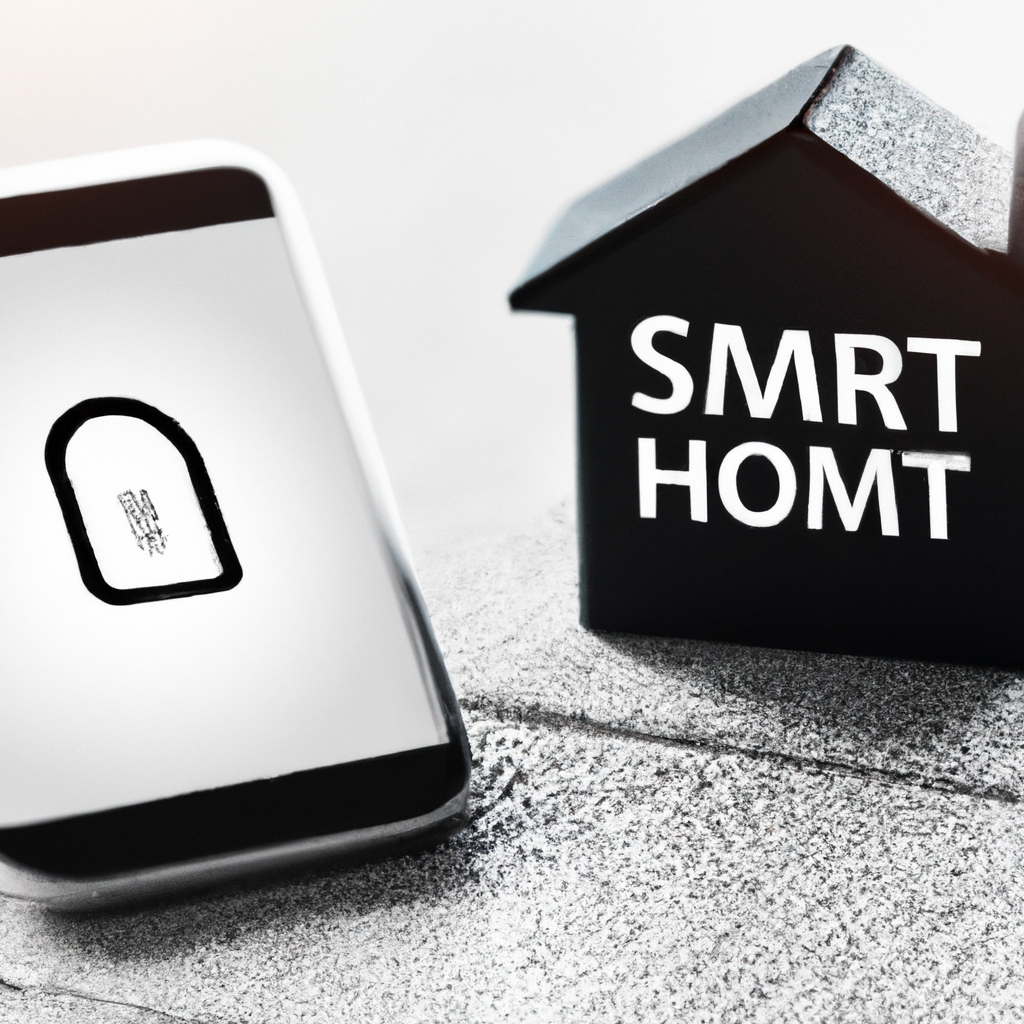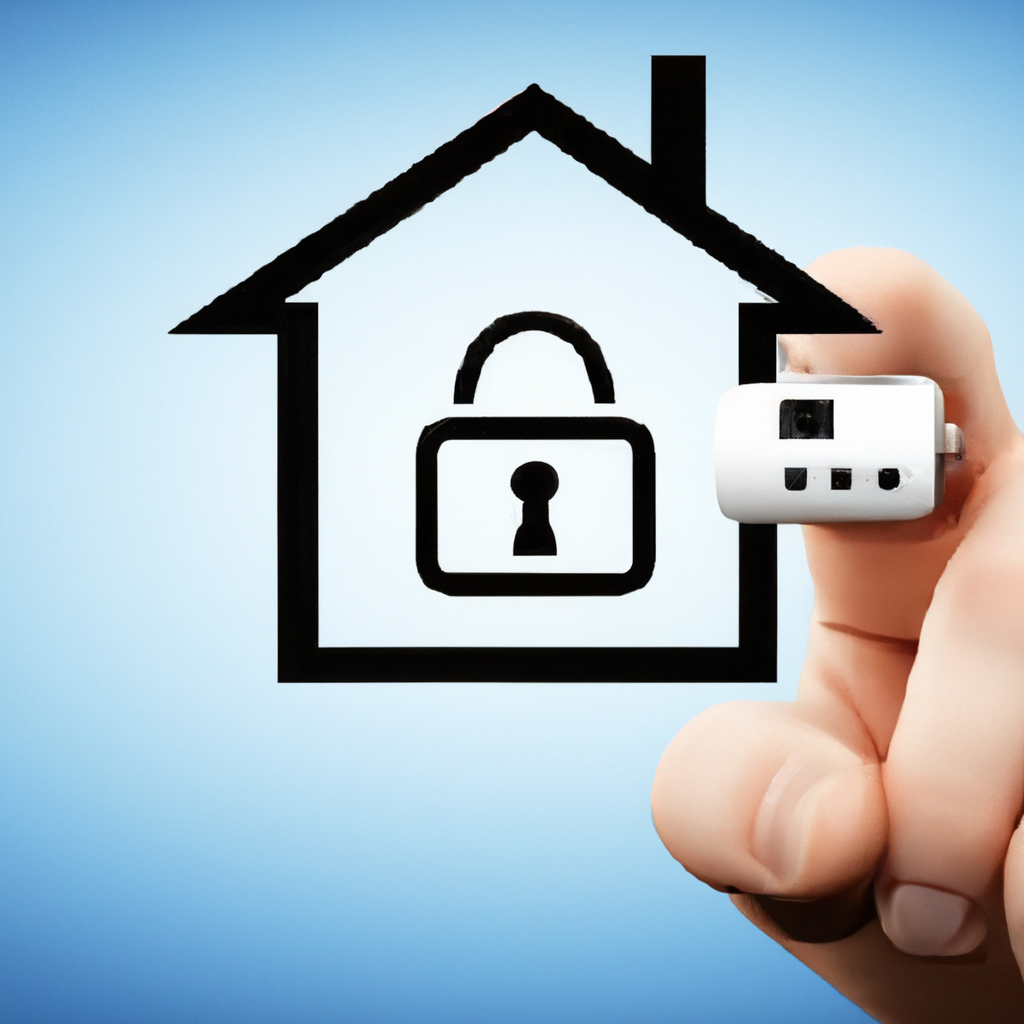In a world where technology is advancing at a rapid pace, ensuring the security of our smart homes has become more crucial than ever before. With the increasing popularity of smart devices and the Internet of Things (IoT), we are constantly connected to our homes through our smartphones, but this convenience also brings along potential vulnerabilities. From hackers gaining access to our personal data to malicious individuals remotely controlling our devices, the risk of cyber threats in our smart homes is a real concern. This article will explore some essential tips and strategies to help you protect your smart home from these digital dangers, providing peace of mind and ensuring a safe and secure living environment for you and your loved ones.
Set Strong Passwords
Choose Complex Passwords
When it comes to setting passwords for your smart home devices, it’s crucial to choose complex and unique ones. Avoid using common combinations like “123456” or “password.” Instead, create passwords that include a mix of uppercase and lowercase letters, numbers, and special characters. Make sure they are at least eight characters long to add an extra layer of security. Remember to change your passwords periodically and never reuse them for multiple accounts.
Use a Password Manager
Managing multiple strong and unique passwords can be overwhelming, but fortunately, password managers are here to help. A password manager securely stores all your passwords and allows you to generate strong passwords with just a click. With a password manager, you only need to remember one master password to access all your other passwords. This not only ensures strong passwords but also saves you the hassle of trying to remember them all.
Change Default Passwords
Smart home devices often come with default passwords, which are widely known and easily exploitable by cybercriminals. Therefore, it is imperative to change these default passwords as soon as you set up your devices. Choose a strong, unique password for each device, following the guidelines mentioned earlier. By doing so, you close one of the most common security vulnerabilities in smart homes.
Secure Your Wi-Fi Network
Change Default Network Name (SSID)
The default network name, also known as the Service Set Identifier (SSID), is often manufacturer-specific and may reveal information about the type of router or network you are using. Changing the default SSID makes it harder for potential attackers to identify your network and target it specifically. Choose a unique and unrelated name that doesn’t disclose any personal information.
Use a Strong Wi-Fi Password
Just as you set strong passwords for your devices, it is equally important to have a strong password for your Wi-Fi network. A weak Wi-Fi password can provide an easy entry point for cybercriminals trying to gain access to your smart home devices. Make sure your Wi-Fi password is unique, complex, and not easily guessable. Again, make use of a combination of letters, numbers, and special characters to enhance the security of your network.
Enable Network Encryption
Enabling network encryption ensures that the data transmitted between your devices and your Wi-Fi network is protected from unauthorized access. The most commonly used encryption protocol for Wi-Fi networks is WPA2 (Wi-Fi Protected Access II), which offers a high level of security. Avoid using older protocols like WEP (Wired Equivalent Privacy) as they are susceptible to hacking. By enabling network encryption, you establish a secure barrier that prevents cybercriminals from intercepting your network traffic.

Update Firmware Regularly
Check for Regular Firmware Updates
Firmware updates are essential for the smooth functioning and security of your smart home devices. Manufacturers often release firmware updates to fix bugs, address vulnerabilities, and introduce new features. Regularly checking for firmware updates ensures that your devices are running on the latest software version, which includes important security patches. Visit the manufacturer’s website or check the device’s settings to see if any updates are available.
Enable Automated Updates
To ensure you never miss a firmware update, consider enabling automated updates. This feature allows your smart devices to automatically download and install the latest firmware as soon as it becomes available. With automated updates, you can rest assured that your devices are always up to date, with the latest security fixes and enhancements. However, it is still recommended to periodically check for any missed updates or issues with the automated update process.
Enable Two-Factor Authentication (2FA)
Enable 2FA on Smart Devices
Two-factor authentication (2FA) provides an additional layer of security by requiring a secondary verification method, usually a unique code or prompt, in addition to your password. Many smart home devices offer the option to enable 2FA, which can significantly reduce the risk of unauthorized access. By enabling 2FA, even if someone manages to obtain your password, they will still need the second factor to gain access to your device.
Use Authentication Apps Instead of SMS
When setting up 2FA, it is recommended to use authentication apps instead of relying on SMS-based verification. Authentication apps generate unique codes for each login attempt and are overall more secure than SMS-based methods, which can be vulnerable to SIM card swapping or interception. Popular authentication apps include Google Authenticator, Microsoft Authenticator, and Authy. By using these apps, you enhance the security of your smart home devices by ensuring that the second authentication factor is in your possession.

Disable Unnecessary Features
Evaluate and Disable Unused Services
Smart home devices often come with a multitude of features and services. However, not all of these features may be necessary or desirable from a security standpoint. Take the time to evaluate and disable any unused services on your devices. By disabling unnecessary features, you reduce the attack surface and limit potential vulnerabilities that cybercriminals could exploit.
Review and Restrict Device Permissions
Review the permissions and access levels granted to each of your smart home devices. Some devices may require access to certain functions or data, but it’s important to make sure that the permissions are necessary and appropriate. Restricting device permissions minimizes the risk of unauthorized access or misuse of your devices and their associated data. Regularly review and update these permissions as needed to ensure optimal security for your smart home.
Create a Separate IoT Network
Set Up a Segregated Network for Smart Devices
Creating a separate network dedicated solely to your smart home devices is a proactive measure to enhance security. This segregates your smart devices from other devices on your home network, such as computers and smartphones, reducing the potential attack surface. By isolating your smart devices on a separate network, even if one of them is compromised, it minimizes the chance of unauthorized access to other devices or sensitive information.
Use a Separate Wi-Fi Router
To further strengthen the segregation of your smart devices, consider using a separate Wi-Fi router exclusively for your IoT network. This ensures that your smart home devices are completely isolated from your main network and any potential threats that may target other devices. Additionally, using a dedicated router allows you to customize the network settings specifically for your IoT devices, enhancing security and performance.

Secure Your Smart Home Hub
Set Up Strong Passwords for Your Hub
The smart home hub serves as the central command center for all your connected devices. It is crucial to secure the hub with a strong and unique password to prevent unauthorized access to your entire smart home network. Follow the guidelines mentioned earlier to create a strong password and change it periodically to maintain optimal security.
Enable Automatic Updates
Similar to individual smart devices, it is essential to keep your smart home hub’s firmware up to date. Enable automatic updates if available, ensuring that any security vulnerabilities are promptly patched. Automatic updates save you the trouble of manually checking for updates and eliminate the risk of missing a critical security fix that could leave your entire smart home network exposed.
Disable Remote Access
Unless you genuinely require remote access to your smart home hub, it is advisable to disable this feature. Remote access, while convenient, can present a potential security risk if not properly secured. By disabling remote access, you restrict access solely to your home network, reducing the chances of a remote attacker gaining control of your smart home hub.
Implement Network Firewall
Install a Firewall to Monitor Incoming and Outgoing Traffic
A network firewall acts as a protective barrier between your smart home devices and the internet. It monitors all incoming and outgoing network traffic, filtering out potentially malicious activity and blocking unauthorized access attempts. Many modern routers come with built-in firewalls, but you can also install third-party firewalls for added protection. Ensure that your firewall is correctly configured and updated to provide maximum security for your smart home network.
Use Intrusion Detection System (IDS)
An intrusion detection system (IDS) serves as an additional layer of security by monitoring network traffic for suspicious behavior or potential attacks. IDS can alert you if it detects any suspicious activity, providing an early warning that allows you to take appropriate action. Consider using an IDS alongside your firewall to enhance the security of your smart home network.

Regularly Monitor and Update Smart Devices
Check for Security Patch Updates
Smart devices are not immune to security vulnerabilities, and manufacturers often release security patch updates to address these weaknesses. Regularly check for updates specific to your smart devices and install them as soon as they are available. Ignoring security updates leaves your devices susceptible to potential cyber threats that exploit known vulnerabilities.
Remove or Replace Unsupported Devices
Technology is constantly evolving, and older smart devices may no longer receive firmware updates or security patches. Unsupported devices become prime targets for cybercriminals seeking to exploit any vulnerabilities. It is advisable to remove or replace any unsupported devices in your smart home to ensure the overall security and integrity of your network.
Sign up for Smart Home Security Services
Consider Professional Security Monitoring
If you want an extra layer of protection and peace of mind, consider subscribing to professional security monitoring services for your smart home. These services offer 24/7 monitoring and can alert you and the authorities in case of any security breaches or suspicious activities. Professional security monitoring ensures that there is always someone actively monitoring and responding to potential threats to your smart home network.
Use Intrusion Detection and Protection Systems
Intrusion detection and protection systems specifically designed for smart homes provide an added layer of security. These systems can detect and prevent unauthorized access attempts, protect against malware, and monitor network traffic for any signs of suspicious activity. By investing in such systems, you add an extra line of defense against cyber threats targeting your smart home.
In conclusion, protecting your smart home from cyber threats requires a proactive approach and a combination of security practices. By setting strong passwords, securing your Wi-Fi network, regularly updating firmware, enabling two-factor authentication, disabling unnecessary features, creating a separate IoT network, and implementing network security measures, you significantly enhance the security of your smart home. Additionally, regularly monitoring and updating your devices, signing up for smart home security services, and staying informed about the latest security practices ensure that you stay one step ahead of potential cyber threats. Keep in mind that cybersecurity is an ongoing process, and it’s crucial to stay vigilant and adapt your security measures as technology evolves and new threats emerge.











